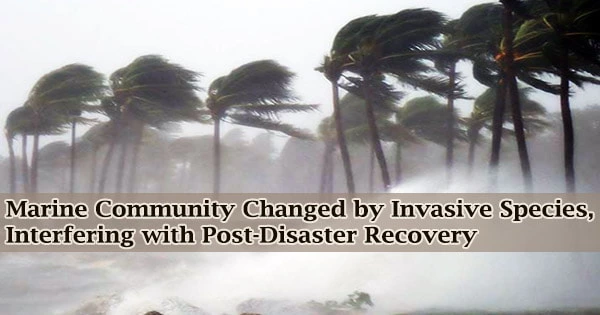Clavelina oblonga, an invasive marine fouling species, interferes with populations’ ability to rebound from natural disasters, a process known as “succession,: in addition to reducing diversity in the communities it invades.
Succession is the process through which an ecosystem bounces back from a disturbance or natural disaster. Is the system’s species makeup essentially the same as it was, or has it changed?
Marine invasive species are extremely difficult and expensive to control and can have catastrophic effects on biodiversity, ecosystems, fisheries, human health, tourism, and coastal development. An invasive species is one that has been unintentionally or intentionally introduced by human activities into regions outside of its natural range and has had negative ecological or economic effects there.
“The classic example of succession is a forest that experiences a wildfire,” says Kayla Christianson, former NC State graduate student and first author of a paper describing the research.
“As the community recovers from the fire, it proceeds through a predictable pattern of community development starting with grasses and ending with trees and a mature forest. This predictable order of succession is due mainly to the seed bank beneath the soil, which allows the community to recover regardless of when the disturbance occurs.”
However, unlike terrestrial ecosystems, marine fouling communities don’t follow the same pattern. Marine fouling species are filter-feeding invertebrate animals, such as barnacles or mussels, that cling to hard surfaces like ship hulls, pilings, and docks. Additionally, fouling species include soft-bodied tunicates like the invasive C. oblonga.
Marine fouling environments are different because different species of larvae are present at different times of the year, so what the ecosystem looks like after a disturbance depends on when it occurs. For marine species, disturbances enhance community diversity.
Professor David Eggleston
“Marine fouling environments are different because different species of larvae are present at different times of the year, so what the ecosystem looks like after a disturbance depends on when it occurs,” says David Eggleston, professor of marine, earth, and atmospheric sciences at North Carolina State University and corresponding author of the research. “For marine species, disturbances enhance community diversity.”
There are 1,711 introduced marine species, according to the World Register of Introduced Marine Species (WRiMS, 2019), but not all of them have become or will become invasive in their new environments. Some introduced species thrive in the absence of the predators and parasites found in their native area, while many introduced species perish.
Eggleston and Christianson were interested in how succession in a fouling environment might be impacted by C. oblonga because of its recent introduction and rapid growth along the North Carolina coast.
Replicating succession experiments carried out in Beaufort, North Carolina, fifty years prior, Christianson and Eggleston. From May 2017 to September 2018, they sank terra cotta settlement plates along the docks every four weeks and examined the communities that grew there.
22 distinct fouling species accumulated on the plates throughout the duration of the investigation. But in each instance, C. oblonga quickly displaced the competing species after settling.
The researchers were able to examine succession following a natural disruption because the study period also included an unusually cold winter and Hurricane Florence’s arrival in September 2018. While C. oblonga was successfully eradicated by the cold and the hurricane, it swiftly came back and displaced other species, eradicating species diversity.
“In retesting succession theory we found that it holds in the absence of invasive species but not in their presence,” Eggleston says.
“For these fouling species, regardless of when a disturbance occurs, the community always reverts back to the invasive species. C. oblonga has only been here since 2015, but it seems to have no real natural predators, it crowds out native species and it has a foothold. We will have to monitor this species and be sure that it doesn’t impact our local shellfish industry.”





